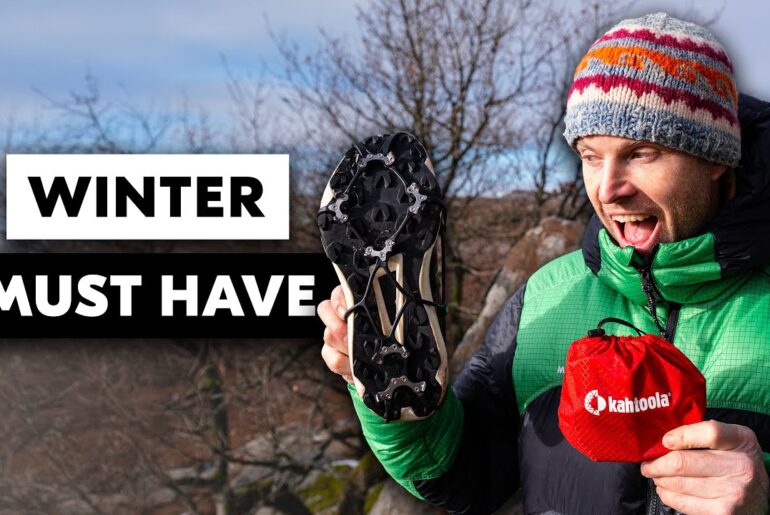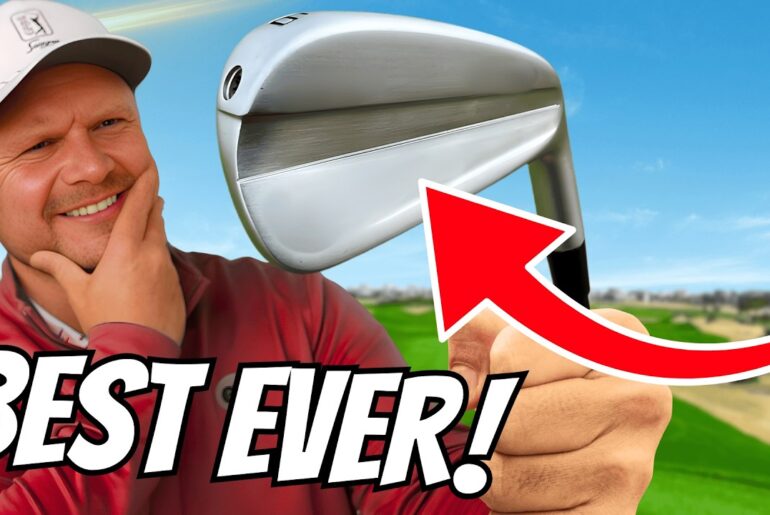Ever wonder why golfers carry so many clubs in their bag? From the driver to the putter—and everything in between—each one has its own unique purpose. In this video, I’ll explain every golf club in the bag in a way that’s easy to understand, even if you’re brand new to the game.
You’ll learn what each club does, when to use it, and why pros—and even weekend players—choose different clubs for different shots. From booming drives to precise wedge shots and smooth putts, this breakdown will help you understand your tools like never before.
Whether you’re a beginner trying to learn the basics or an experienced player who wants a refresher, this video will give you the knowledge to make smarter club choices and lower your scores.
🎯 What you’ll learn:
-The real difference between woods, irons, and wedges
-Why hybrids have replaced long irons for many golfers
-Which clubs are most important when you’re starting out
-How club fitting can transform your game
If this helped you finally understand what’s in a golf bag, hit that like button, subscribe, and I’ll see you on the course!
#GolfExplained #GolfForBeginners #GolfTips #GolfClubs #GolfBasics #GolfLessons #GolfGame #LearnGolf #GolfInstruction #GolfSeries #GolfEducation #GolfYouTube #GolfLife #Golf101 #GolfEquipment #GolfGear
Golf might look simple, but one of the first things you’ll notice is that golfers carry a lot of different clubs. Each club has its own special job, kind of like tools in a toolbox. Some are designed to hit the ball really far, others to hit it high in the air, and some are made for rolling the ball on the green. In this video, I’ll explain every golf club in the bag in a way that’s easy to understand. Whether you’re just starting out or you’ve been playing for years, knowing what each club does will help you make better choices on the course and lower your scores. Let’s start with the biggest club in the bag, the driver. The driver. The driver is the longest and biggest club in your bag. Designed to hit the ball as far as possible off the tee. It has the largest head, the longest shaft, and the least loft of any club you’ll use for a full swing. What makes the driver special is that it’s the only club specifically designed to hit the ball while it’s sitting on a tee. The large rounded head helps you make solid contact even on offc center hits and the low loft helps the ball travel farther once it’s in the air. Bryson Desambo is known for his incredible driving distance. Sometimes hitting the ball over 350 y. He even changed his entire body and swing to maximize his driver distance. The biggest challenge with the driver is accuracy. Because it’s so long, it’s the hardest club to control. Many beginners struggle with slicing the driver. The ball curving sharply to the right for right-handed golfers. If you’re just starting out, focus on making solid contact rather than trying to swing as hard as you can. Fairway woods. Fairway woods are the next longest clubs in your bag after the driver. The most common fairway woods are the 3-wood and 5-wood, with the 3-wood hitting the ball farther than the 5-wood. What makes fairway woods special is their versatility. You can hit them off the tea for more control than a driver or from the fairway for more distance than an iron. They have a rounded bottom called the sole that helps them glide over the grass without digging in. Henrik Stenson is famous for his incredible three-wood shots. At the 2016 Open Championship, he relied on his 3-wood instead of his driver for most of the tournament and won. The key to hitting fairway woods well is to make a shallow sweeping swing that brushes the turf rather than taking a deep divot. Many beginners try to help the ball into the air, but these clubs are designed to get the ball up easily if you make solid contact. Hybrids. Hybrids are newer clubs that combine features of woods and irons. They’re designed to replace long irons, two, three, and four irons, which many golfers find difficult to hit consistently. What makes hybrids special is their forgiveness. The design helps get the ball in the air even on offc center hits, which is why many golfers call them rescue clubs. They work especially well from rough and bad lies where a fairway wood might be too difficult to hit. While some pros prefer higher lofted fairway woods or long irons, many players, especially amateurs, benefit from replacing long irons with hybrids. To hit a hybrid well, swing it more like an iron than a wood with a slight downward strike. The club is designed to be forgiving, so focus on making solid contact rather than trying to help the ball into the air. Long irons. Long irons include the two, three, and four irons, though many golfers have replaced these with easier to hit hybrids. These clubs have less loft, which makes the ball go farther, but also makes them harder to get in the air. What makes long irons special is the control they give you. When hit well, they produce a lower, more penetrating ball flight that can be crucial in windy conditions. They also roll farther after landing, which can be useful on firm fairways. Tiger Woods is famous for his stinger shot with a long iron, a low piercing shot that travels far and stays under the wind. Long irons require a precise strike to hit well. You need to hit down on the ball and take a divot after impact. If you struggle with long irons, don’t be afraid to replace them with hybrids, which most golfers find easier to hit. Mid irons. Mid irons include the five, six, and seven irons. These are the workh horses of your golf bag, used for approach shots to the green from medium distances. What makes mid irons special is their balance of distance and accuracy. They’re easier to control than long irons, but still provide enough distance to reach most greens. The 7iron is often considered the most versatile club in the bag. Colin Morakawa is known for his exceptional iron play, which helped him win the 2020 PGA Championship at just 23 years old. To hit mid irons well, focus on hitting down and through the ball, taking a divot after impact. This creates backspin that helps the ball stop quickly on the green. A common mistake is trying to scoop the ball into the air instead of hitting down on it. Short irons. Short irons include the eight and nine irons in the pitching wedge. These clubs have more loft, which makes the ball go higher, but not as far. They’re used for shorter approach shots to the green, typically from 150 yard and in. What makes short iron special is the control and precision they offer. With these clubs, good players can stop the ball quickly on the green and even spin it backward. The higher loft also makes them more forgiving on slight mits. Justin Thomas is considered one of the best short iron players today, known for his ability to attack pins with incredible accuracy. The key to great short iron play is clean contact and consistent distance control. Focus on hitting down on the ball and finishing with your weight on your front foot. These shots are your best chance to get the ball close to the hole, so they’re crucial for scoring well. Gap wedge. The gap wedge, sometimes called an approach wedge or utility wedge, fits between your pitching wedge and sand wedge in terms of loft. It’s designed to fill the gap in distance between these two clubs. What makes the gap wedge special is that it gives you more precise distance control for those awkward shots that are too short for a pitching wedge, but too long for a sand wedge. It typically has around 50 52° of loft. Jordan Spe is known for his incredible wedge play, often using his gap wedge for precise approach shots from 100 110 yards. The gap wedge is versatile. You can use it for full shots, pitch shots, and even around the green. Like all wedges, focus on clean contact rather than trying to help the ball into the air. The loft will do that job for you. Sand wedge. The sand wedge was specifically designed to hit shots out of bunkers, sand traps, though it’s useful from many other places, too. It typically has around 54 56 degrees of loft. What makes the sand wedge special is its wide bottom edge called the bounce. This bounce prevents the club from digging too deeply into the sand or soft ground. When hitting from a bunker, you actually hit the sand behind the ball, not the ball itself. Phil Mickelson is known as one of the best bunker players ever, capable of hitting amazing sand shots in the most difficult situations. The sand wedge is also great for pitch shots around the green and approach shots from about 80 yards. For bunker shots, open your stance slightly, open the club face, and focus on hitting the sand about an inch behind the ball. Lob wedge. The lob wedge is the highest lofted club in most golfers bags, typically with 5860° of loft. It’s designed for shots that need to go high in the air and stop quickly. What makes the lob wedge special is its ability to help you get out of tough spots around the green. When you need to hit over a bunker or water and stop the ball quickly, the lob wedge is your best friend. Phil Mickelson is the master of the flop shot with his lob wedge, hitting the ball extremely high and making it stop almost immediately when it lands. The lob wedge requires good technique to use effectively. For basic shots, keep your weight forward and let the loft of the club do the work. For flop shots, open the club face, play the ball forward in your stance, and swing with confidence. Putter. The putter is the most used club in your bag. You’ll use it on every hole. It’s designed for rolling the ball along the ground and into the hole once you’re on the green. What makes the putter special is its flat face and minimal loft, usually just 2 to 4°. This design helps the ball roll smoothly rather than bouncing or skipping. Putters come in many different shapes and styles, from traditional blade putters to larger mallet putters. Tiger Woods is known for his clutch putting under pressure, making some of the most memorable putts in golf history with his Scotty Cameron blade putter. Good putting is about both direction and distance control. Focus on a smooth pendulum-like stroke with minimal wrist action. Many beginners try to hit the ball rather than making a smooth stroke that allows the ball to roll naturally. Specialty clubs. Beyond the standard clubs, some golfers carry specialty clubs for specific situations. These might include driving iron, a low lofted iron designed for control off the tea when accuracy is more important than maximum distance. 7wood or 9wood, higher lofted fairway woods that are easier to hit than long irons and go higher than standard fairway woods. 64° wedge, an extremely high lofted wedge for specialized short game shots. Chipper. A club designed specifically for chip shots around the green. Often shaped like a putter, but with more loft. What makes specialty clubs useful is that they can help with specific challenges in your game. However, you’re limited to 14 clubs in your bag during a round, so choose wisely based on your strengths and weaknesses. Brooks Cupa is known for carrying a driving iron instead of a 3-wood in certain tournaments. Where control off the tea is crucial. If you’re just starting out, focus on the basic clubs before adding specialty options. As your game improves, you might find certain specialty clubs helpful for your specific needs. Club fitting. While not a specific club, it’s important to understand that clubs can be customized to fit your body and swing. Club fitting involves adjusting things like shaft length, shaft flex, lie angle, grip size, and more. What makes club fitting important is that properly fitted clubs can help you hit the ball more consistently and avoid developing bad habits to compensate for ill-fitting equipment. Bryson Desambo takes club fitting to the extreme. All of his irons are the same length, 37.5 in, about the length of a 7iron, to create a more consistent swing. For beginners, standard clubs are usually fine to start with. As you improve and your swing becomes more consistent, consider getting fitted for clubs that match your specific needs. Even a basic fitting can make a big difference in your performance. So, there you have it. Every golf club in the bag explained. Remember, each club has a specific job, and learning when to use each one is a big part of becoming a better golfer. You don’t need to carry all 14 allowed clubs when you’re starting out. Many beginners do well with just a driver, a fairway wood, a hybrid, a few irons, 7, 9, a sand wedge, and a putter. As you improve, you can add more clubs to fill distance gaps and handle more specific situations. The most important thing is to practice with each club so you understand how far it goes and what it can do. Hit that like button if this helped you understand golf clubs better, and I’ll see you on the course.







